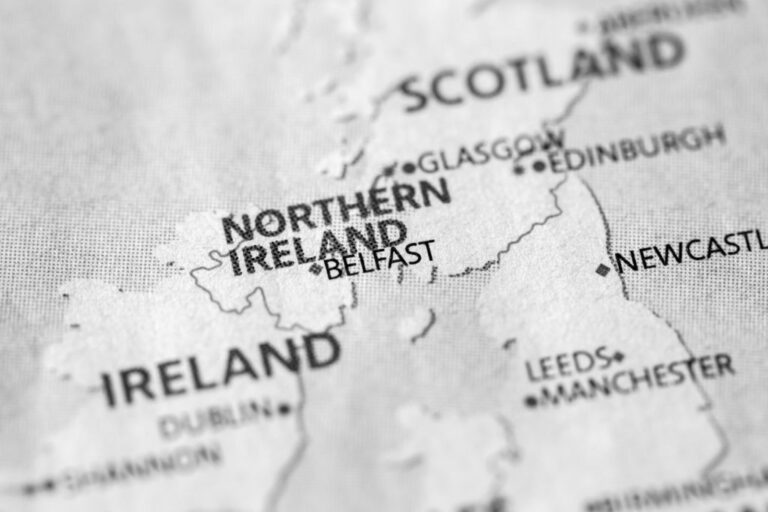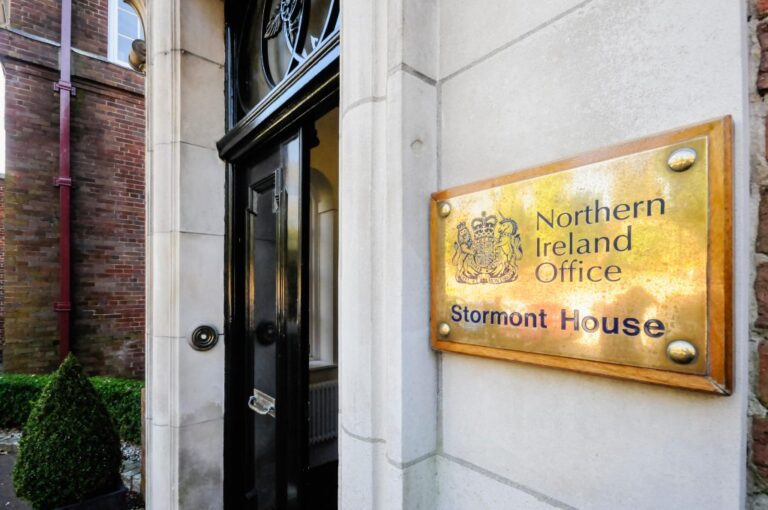What is best practice when writing about a Nobel Prize winner (John Hume) who shared it with another Northern Ireland leader (David Trimble)? Surely the best approach, while accepting the humanity and great achievement of John Hume, is not to suppress all serious questions about his career in favour of an actual caricature of the Northern Ireland problem.
Professor Henry Patterson, himself a Northern Ireland Civil Rights Association marcher back in the day, reacts against the glib and one-sided version of the Ulster crisis. W.F. Monypenny in his book The Two Irish Nations, published in 1913, talked of the clash of two great rights — by which he meant the unionist case and the nationalist case. Because it was a clash of two rights, this is what he felt made for the tragedy of the Troubles. It is this sense of moral seriousness that is lacking in Lord Patten’s lecture. The concept of equality of esteem is at the very heart of the Good Friday Agreement. Strangely, Lord Patten’s text is a long way from such an ethos. The point made by Professor Patterson about the double minority in Ireland — a key theme popularised by Harold Jackson in the Guardian in the 1970s — requires us all to treat both communities with absolute fairness in our discourse.
Unveiling a truer likeness of John Hume
Henry Patterson
At the unveiling of a bust of John Hume in the European Parliament in June 2022, Chris Patten gave a lecture on Hume’s life and legacy. Given Patten’s oft expressed distaste for Brexit, the current British government’s Protocol proposals and the DUP, he was an unsurprising choice of speaker. However, his track record of word and action on Northern Ireland and his views of its Unionist inhabitants made him a less than ideal candidate to produce a reflective evaluation of the most important figure in Northern Irish nationalism since the great nationalist parliamentarian, Joe Devlin (1871-1934).
The result is not helped by the fact that, although the small region is perhaps the most researched and published about conflict area in the world, there is little evidence that Patten has read much of it. Thus, we are informed that the ‘Ulster Civil Rights Association’ was formed in 1967 when the organisation, which played a critical role in generating the crisis of the Stormont state in 1968 and which has been the subject of numerous books and articles, was the Northern Ireland Civil Rights Association.
On the formation of Northern Ireland, Patten said: ‘The Unionist state that was formed was itself attacked by Republican nationalists (Pattenese for the IRA) from time to time, and responded by using the largely Protestant police force, the volunteers of the Ulster Special Constabulary and a supporting paramilitary force, the Ulster Defence Regiment, principally as a shield for the unionist state….’
The Ulster Defence Regiment was not a paramilitary force but a regiment of the British Army created in the aftermath of the abolition of the Ulster Special Constabulary in 1968 as part of the wholesale reform of the Stormont administration impelled by Harold Wilson. It is strange that Patten, who was appointed the chairman of the commission set up by Tony Blair’s government in 1999 to radically reform the Royal Ulster Constabulary — including getting rid of the force’s name and British symbolism — didn’t even refer to the organisation by name. Nor does his lecture mention the 303 members of the RUC/RUC Reserve and the 206 members of the UDR who were murdered, largely by the Provisional IRA. In Hume’s own city, 64 members of the RUC and UDR lost their lives.
The Ulster Unionist leader, David Trimble, referred to the Patten Report as a ‘shoddy piece of work’. Perhaps that explains why Patten’s account of the peace process and the negotiation of the Good Friday Agreement mentions every key figure but not Trimble, who received, along with Hume, a Nobel Prize for his contribution.
The Unionist state is seen, and here he is faithful to Hume, as a tradition analogous to the white supremacism of the southern states of the USA in the 1960s. The situation in the city of Derry is treated as a microcosm for Northern Ireland as a whole and as a result the degree of discrimination in housing and employment is exaggerated. As the Queen’s University scholar Professor John Whyte established decades ago, the vast majority of complaints about gerrymandering and discrimination concerned a number of Unionist-controlled councils in the west of the Province where Unionists were a minority or enjoyed only a small numerical advantage over Nationalists.
Missing from Patten’s narrative, mirroring that of Hume, is the fact that Unionists, although a majority in Northern Ireland, saw themselves as a minority on the island of Ireland, threatened by recurrent IRA campaigns — the 1956-62 campaign ended five years before the formation of the civil rights association — and by successive Irish government’s which did not accept Northern Ireland’s right to exist. Their response to the civil rights movement, short-sighted and obtuse though it was, reflected that fundamental and existential sense of insecurity.
Patten quotes from one of a series of articles which Hume contributed to the Irish Times in 1964 in which he criticised Catholic bigotry and argued that the Protestant tradition in the North was as strong and legitimate as the Catholic and Nationalist one. But Hume’s position radicalised and hardened along with the onset of the Troubles. The Ulster Workers’ Council strike which destroyed the power-sharing executive in which Hume was a minister in 1974 played a key part here. What is missing from the northern nationalist narrative about 1974 and is also missing from Patten’s lecture is the role that Hume and the Irish government played in destabilising power-sharing by insisting on a powerful Council of Ireland.
After 1974, Hume played a decisive role in pushing the SDLP in a greener direction. In the process the two founders of the party who had a more sympathetic understanding of Unionists, Paddy Devlin and Gerry Fitt, were marginalised and forced out. They, like Trimble, are ignored in Patten’s narrative.
By the end of the 1970s, Hume was referring to the Unionists as ‘one of the most right-wing forces in Europe, nobody else would stand for them anywhere’. He welcomed Thatcher as the person to ‘lance the Protestant boil’ and bring the Unionists to heel. A settlement would have to be worked out between London and Dublin and imposed on the Unionists who would then be forced to enter into talks on a shared devolved government.
When the Anglo-Irish Agreement failed to do that, Hume embarked on his wooing of Gerry Adams. Hume’s embrace of the Provisionals worried some members of the SDLP like Joe Hendron and Eddie McGrady, again not mentioned in the lecture. Eventually the Sinn Fein leadership would have little problem in assimilating Hume’s narrative of unionist supremacism into their own account of how the repression of the civil rights movement, which Patten exaggerates, justified their own decades-long campaign of violence.
There is predictably no reflection by Patten on why the SDLP is a sad shadow of its former self and a political party that continues to justify assassinations and car-bombs may well form the next government of the Republic.
Henry Patterson is Emeritus Professor of Irish Politics at Ulster University.



